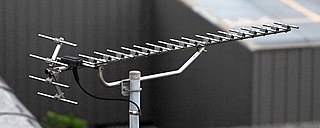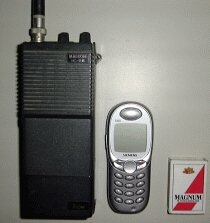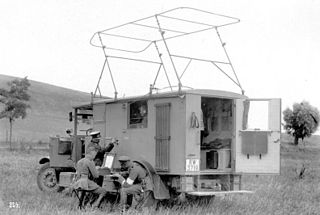List of coordinators
This list is missing information about other frequency coordinators certified by the FCC.(October 2010) |
- Public Safety
- IMSA [2]
- Business and special emergency
- Forest Industries Telecommunications
In 1982, the United States Congress provided the Federal Communications Commission (FCC) the statutory authority to use frequency coordinators to assist in developing and managing the Private Land Mobile Radio (PLMR) spectrum. Frequency coordinators, in this case, are private organizations that have been certified by the Commission to recommend the most appropriate frequencies for applicants in the designated Part 90 radio services. This frequency coordination process is intended to make more efficient use of the PLMR spectrum for the benefit of all members of the public. In general, applications for new frequency assignments, changes to existing facilities or operation at temporary locations must include a showing of frequency coordination. [1]
Anything that requires Frequency Coordination must be electronically submitted by the Coordinator. Frequency Coordination is required for a new filing. Major Modifications and Amendments that change or add frequencies, emissions, ERP, Output Power, Antenna Height, Ground Elevation, change location of Base, Fixed, Mobile or Control stations or number of Mobile units and any change to station class. (Hydro frequencies listed in CFR 47 Section 90.265(a). Go through the National Oceanic and Atmospheric Administration (NOAA) for coordination.
Frequency Coordination is not required for STAs unless the applicant is requesting a waiver of the 180-day limit of STA. Developmental and Demonstration applications, Radiolocation (RS) applications, Itinerant operations and station classes ending in the letter "I" or "L" and applications for 6.1 Meter Control Stations.
There are different frequency coordinators authorized for the different categories of PLMR spectrum.
This list is missing information about other frequency coordinators certified by the FCC.(October 2010) |
The ISM radio bands are portions of the radio spectrum reserved internationally for industrial, scientific, and medical (ISM) purposes, excluding applications in telecommunications. Examples of applications for the use of radio frequency (RF) energy in these bands include RF heating, microwave ovens, and medical diathermy machines. The powerful emissions of these devices can create electromagnetic interference and disrupt radio communication using the same frequency, so these devices are limited to certain bands of frequencies. In general, communications equipment operating in ISM bands must tolerate any interference generated by ISM applications, and users have no regulatory protection from ISM device operation in these bands.

Ultra high frequency (UHF) is the ITU designation for radio frequencies in the range between 300 megahertz (MHz) and 3 gigahertz (GHz), also known as the decimetre band as the wavelengths range from one meter to one tenth of a meter. Radio waves with frequencies above the UHF band fall into the super-high frequency (SHF) or microwave frequency range. Lower frequency signals fall into the VHF or lower bands. UHF radio waves propagate mainly by line of sight; they are blocked by hills and large buildings although the transmission through building walls is strong enough for indoor reception. They are used for television broadcasting, cell phones, satellite communication including GPS, personal radio services including Wi-Fi and Bluetooth, walkie-talkies, cordless phones, satellite phones, and numerous other applications.

A radiotelephone, abbreviated RT, is a radio communication system for conducting a conversation; radiotelephony means telephony by radio. It is in contrast to radiotelegraphy, which is radio transmission of telegrams (messages), or television, transmission of moving pictures and sound. The term is related to radio broadcasting, which transmit audio one way to listeners. Radiotelephony refers specifically to two-way radio systems for bidirectional person-to-person voice communication between separated users, such as CB radio or marine radio. In spite of the name, radiotelephony systems are not necessarily connected to or have anything to do with the telephone network, and in some radio services, including GMRS, interconnection is prohibited.
Narrowband signals are signals that occupy a narrow range of frequencies or that have a small fractional bandwidth. In the audio spectrum, narrowband sounds are sounds that occupy a narrow range of frequencies. In telephony, narrowband is usually considered to cover frequencies 300–3400 Hz, i.e. the voiceband.

The General Mobile Radio Service (GMRS) is a land-mobile FM UHF radio service designed for short-range two-way voice communication and authorized under part 95 of the US FCC code. It requires a license in the United States, but some GMRS compatible equipment can be used license-free in Canada. The US GMRS license is issued for a period of 10 years. The United States permits use by adult individuals who possess a valid GMRS license, as well as their immediate family members. Immediate relatives of the GMRS system licensee are entitled to communicate among themselves for personal or business purposes, but employees of the licensee who are not family members are not covered by the license. Non-family members must be licensed separately.
In the United States, the business band is the colloquial name used by radio users who utilize and scanner hobbyists who listen to the Federal Communications Commission (FCC) Industrial/Business pool frequencies. The regulations listing frequencies in this pool are contained in Subpart C of Part 90, Title 47 of the CFR.
In the United States, the Multi-Use Radio Service (MURS) is a licensed by rule two-way radio service similar to the Citizens band (CB). Established by the U.S. Federal Communications Commission in the fall of 2000, MURS created a radio service allowing for licensed by rule operation in a narrow selection of the VHF band, with a power limit of 2 watts. The FCC formally defines MURS as "a private, two-way, short-distance voice or data communications service for personal or business activities of the general public." MURS stations may not be connected to the public telephone network, may not be used for store and forward operations, and radio repeaters are not permitted.
The 1.25-meter, 220 MHz or 222 MHz band is a portion of the VHF radio spectrum internationally allocated for amateur radio use on a primary basis in ITU Region 2, and it comprises frequencies from 220 MHz to 225 MHz. In the United States and Canada, the band is available on a primary basis from 222 to 225 MHz, with the addition of 219 to 220 MHz on a limited, secondary basis. It is not available for use in ITU Region 1 or ITU Region 3. The license privileges of amateur radio operators include the use of frequencies within this band, which is primarily used for local communications.

Radio-paging code No. 1 is an asynchronous protocol used to transmit data to pagers. Its usual designation is an acronym of the Post Office Code Standardisation Advisory Group, the name of the group that developed the code under the chairmanship of the British Post Office that used to operate most telecommunications in Britain before privatization.
A broadcast license is a type of spectrum license granting the licensee permission to use a portion of the radio frequency spectrum in a given geographical area for broadcasting purposes. The licenses generally include restrictions, which vary from band to band.
A land mobile radio system (LMRS) is a person-to-person voice communication system consisting of two-way radio transceivers which can be stationary, mobile, or portable.
IEEE 802.11y-2008 is an amendment to the IEEE 802.11-2007 standard that enables data transfer equipment to operate using the 802.11a protocol on a co-primary basis in the 3650 to 3700 MHz band except when near a grandfathered satellite earth station. IEEE 802.11y is only being allowed as a licensed band. It was approved for publication by the IEEE on September 26, 2008.
The 5-centimeter or 5 GHz band is a portion of the SHF (microwave) radio spectrum internationally allocated to amateur radio and amateur satellite use on a secondary basis. In ITU regions 1 and 3, the amateur radio band is between 5,650 MHz and 5,850 MHz. In ITU region 2, the amateur radio band is between 5,650 MHz and 5,925 MHz. The amateur satellite service is allocated 5,830 to 5,850 MHz, for down-links only on a secondary basis, and it is also allocated 5,650 to 5,670 MHz, for up-links only on a non-interference basis to other users. Amateur stations must accept harmful interference from ISM users operating in the band. The band is within the IEEE C Band spectrum.

Land mobile service is – in line to ITU Radio Regulations – a mobile service between base stations and land mobile stations, or between land mobile stations.
The 13 centimeter, 2.3 GHz or 2.4 GHz band is a portion of the UHF (microwave) radio spectrum internationally allocated to amateur radio and amateur satellite use on a secondary basis. The amateur radio band is between 2300 MHz and 2450 MHz, and thereby inside the S-band. The amateur satellite band is between 2400 MHz and 2450 MHz, and its use by satellite operations is on a non-interference basis to other radio users. The license privileges of amateur radio operators include the use of frequencies and a wide variety of modes within these ranges for telecommunication. The allocations are the same in all three ITU Regions.
This is a review of low-power television stations (LPTV) in the United States, transmitting on VHF channel 6, which also operate as radio stations capable of being picked up by many standard FM receivers. These stations are colloquially known as "Franken FMs", a reference to Frankenstein's monster, because TV stations functioning as radio stations had not been envisioned by the Federal Communications Commission (FCC). The FCC commonly refers to these stations as "FM6" operations. All of these FM transmissions are authorized for operation on a center frequency of 87.75 MHz.

Forest Industries Telecommunications (FIT) is a Federal Communications Commission (FCC) certified frequency coordinator and a non-profit association. Established in 1947, its members include those companies or individuals who employ or are eligible to use Land Mobile Radio Service (LMRS) two-way radios.
The Pan-American television frequencies are different for terrestrial and cable television systems. Terrestrial television channels are divided into two bands: the VHF band which comprises channels 2 through 13 and occupies frequencies between 54 and 216 MHz, and the UHF band, which comprises channels 14 through 36 and occupies frequencies between 470 and 608 MHz. These bands are different enough in frequency that they often require separate antennas to receive, and separate tuning controls on the television set. The VHF band is further divided into two frequency ranges: VHF low band between 54 and 88 MHz, containing channels 2 through 6, and VHF high band between 174 and 216 MHz, containing channels 7 through 13. The wide spacing between these frequency bands is responsible for the complicated design of rooftop TV antennas. The UHF band has higher noise and greater attenuation, so higher gain antennas are often required for UHF.
Wireless microphones may operate on various frequencies, either licensed or unlicensed, depending on the country.
This articles contains material copied from the Federal Communications Commission Archived 2010-10-31 at the Wayback Machine website.